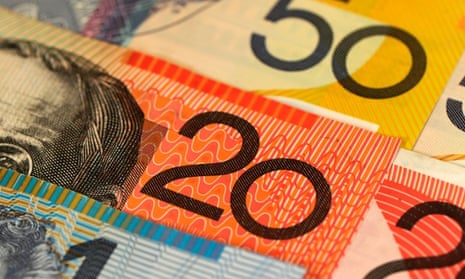The Australian dollar dipped below 80 US cents for the first time since July 2009, after the European Central Bank announced a massive economic stimulus program.
The currency dropped to a five and a half year low of 79.95 US cents on Friday morning after losing more than half a US cent overnight following the unveiling of the European Central Bank’s €60bn (A$85bn) a month stimulus plan. But it rebounded slightly during the morning and was trading at 80.2 US cents as of 10am AEDT.
The Australian dollar has not been below 80 US cents since mid-2009 and has been sliding slowly for more than a year due to falling commodity prices and a stronger US dollar after hitting its 2014 high of 95.02 US cents in June.
The Aussie dollar’s drop in value has been good news for Australian exporters but bad news for anyone travelling overseas or buying imported goods.
On Wednesday, ANZ said it expected the currency to fall to around 76 US cents by the middle of 2015. In a research note, it said the release of National Australia Bank’s closely watched business confidence survey and the Australian Bureau of Statistic’s December quarter inflation figures on Wednesday would be key events for the currency next week.
The inflation figures, in particular, are shaping up as the key data to watch, with most economists tipping the annual inflation rate to come in below 2%, with underlying inflation towards the lower end of the RBA’s 2-3% target range.
That could give the RBA not only room to cut rates, but a reason to do so, if recent moves from international central banks are any guide.

Comments (…)
Sign in or create your Guardian account to join the discussion